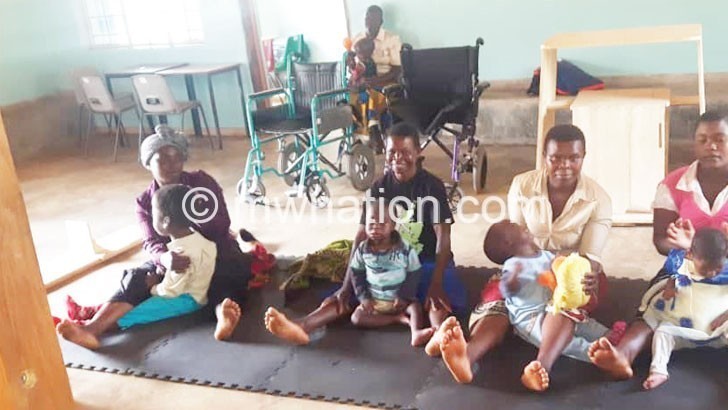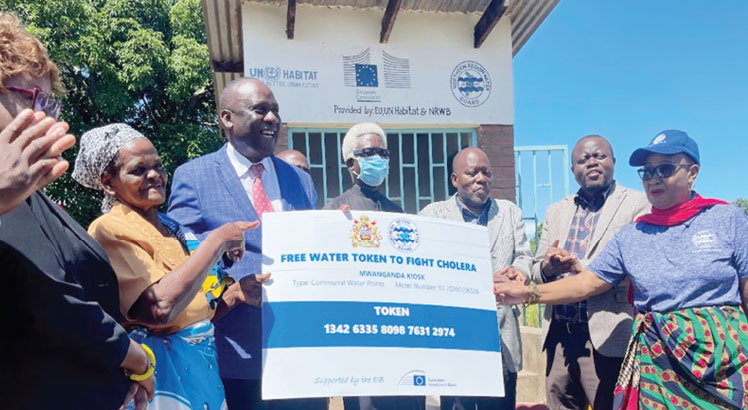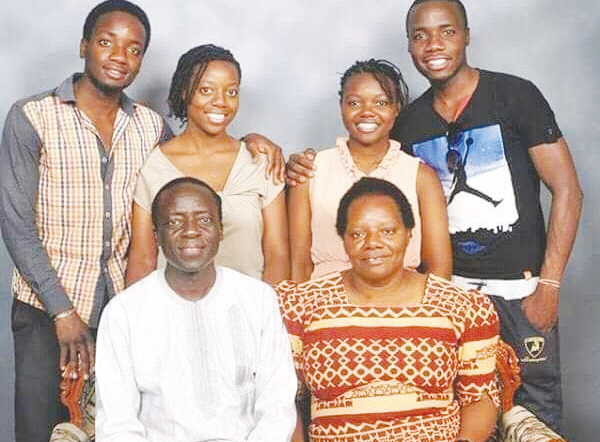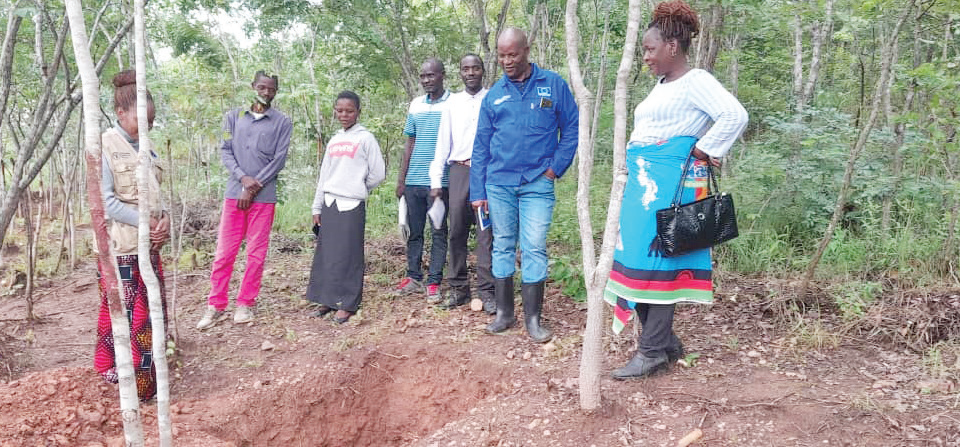Plight of children with cerebral palsy, poor women
One morning in 2013—a few months after the birth of her first child—Alice Khangiwa of Kachingwe Village, Traditional Authority Nkalo, Chiradzulu, woke up with a start.
At 4am, her husband was not in bed, but he was there an hour before she went into her last dose of sleep that night.
From that 4am absence, it turned out that Khangiwa’s husband had left for good, because he was allegedly tired of taking care of their baby Precious who was born with cerebral palsy conditions.

Precious was born in 2013, after Khangiwa, 29, was referred from Nkalo Health Centre in Chiradzulu to Queen Elizabeth Central Hospital (Qech), about 85 kilometres away from her home village, due to high pregnancy secondary to twin gestation.
At four months, Precious was able to sit down, but the mother noticed he could not transient to crawling. At a local hospital, they diagnosed him with Developmental Delay and asked the mother to wait for more months in case he was going to start crawling.
After a year without any improvement, Khangiwa took the child to Qech where he was assessed and diagnosed with pararesis, leading into cerebral palsy condition.
The assessment noted that Precious has no muscle power or tone in both extremities and had episodes of infections like malaria, pneumonia and malnutrition. He was started on physiotherapy from 2013 and continued to 2017 when he was able to receive the same services at Female Education and Empowerment Centre (FEEC)closer home.
Precious is currently attending physiotherapy sessions at nearby Mulanje Rehabilitation Centre, with the support of FEEC.
Now, in Standard One at Namoyo Primary, Precious is able to recall what he learns at school. However, although he is able to talk, eat and show emotions, there has been no significant improvement on his overall health status.
He is able to attend clinic four times in a month, after he was given funding by a Scottish donor who, through FEEC, provided a bicycle and some money to the mother to start a small business. The mother currently, sells fish and vegetables.
Precious was also provided with a bespoke wheelchair and an ongoing provision of Likuni Phala. Sadly, they share small house with goats, which is causing additional health risks to Precious, his younger sister and mother.
FEEC, located at Mendulo Catholic Parish near Chonde Market in Mulanje, has been assisting Khangiwa and her children in various ways, including transport to seek further medical help at Qech. At Qech, for example, the boy receives physiotherapy treatment, which the mother says is gradually improving his condition.
The founding of FEEC
FEEC is the brainchild of Charles Fawcett, an honours graduate with a Bachelor of Social Science in Applied Physics from Scotland. He came to Malawi to set up science laboratories in some secondary schools in Mulanje and Thyolo districts.
Fawcett, who has over 40 years experience in dealing with children with disabilities, was saddened with the situation of hundreds of children with various disabilities and facing various challenges around the schools he was working in.
After a couple of years, Fawcett facilitated the establishment of FEEC to provide material and psycho-socio support in the communities.
Aiming Higher in Malawi, a charity registered in Scotland assisted to register FEEC in Malawi in 2013. Thus FEEC is the main implementing partner for Aiming Higher in Malawi, which also facilitates partnerships of 16 primary and 10 secondary schools in Mulanje, with Scottish schools in North Lanarshire District Council.
FEEC, which is the centre for the disabled children in a 25-kilometre radius, covers traditional authorities Nkalo in Chiradzulu, Mthiramanja and Mabuka in Mulanje, and Nanseta in Thyolo.
“Mostly, we are overwhelmed by the number of children that are brought to this centre. Currently, we take care of about 550 children,” says FEEC health and nutrition coordinator Caroline Tchete.
She said the charity benefits a lot working with Mulanje District Social Welfare office and other government and non-governmental organisations (NGOs) championing the welfare of children, especially the disabled.
“We usually have monthly health and nutritional assessments for these children. Sometimes, we invite specialised doctors to attend to the children. Although we are working hard, we are lacking enough resources to provide for these children,” she adds, further disclosing that, like Precious, most of the disabled children come from poor female-headed families, where there are no men.
Tchete says for effective management, they have formed village care groups of 25 children each where guardians are engaged in various activities, particularly agriculture.
On his part, Mulanje District Social Welfare officer Robert Sawiche also hails the working relationship with FEEC.
“We appreciate the work that FEEC is doing in our district. We have been working with them. Apart from helping with children with disabilities, they have been supporting us in training community based care givers,” he says.
Fawcett, says he has discovered that most men run away after their wives give birth to a disabled child, because of a misconception that they married a cursed woman “or they believe there is a witch in the wife’s family”.
“In this area, we have about 59 children with cerebral palsy alone, and these children, if there is a lot of stigmatisation, they grow up feeling isolated and this affects their thinking,” says Fawcett.
He further says the challenge is that issues of disabled children are cross-cutting and take a lot of time to bear fruits; yet most donors are only eager to fund projects that register instant success. He describes fighting cerebral palsy as slow, and sometimes disappointing.
Cerebral palsy in vulnerable communities
Disability and rehabilitation specialist and consultant, Wongani Chavula, who advocates for disability inclusion, says working with children with cerebral palsy is both challenging and exciting.
“When you see a child improving even if it is a slight change, like being able to move his/her hand, it brings joy and hope,” she says.
But Chavula says the main challenge in working with such children is on appliances that help them to achieve different milestones, but are not readily available in public hospitals, and poor families cannot afford to buy.
“For example, at a certain age, their need is an adaptive chair to facilitate sitting and at another age, they may need a standing frame to help with standing and some may need special orthotic to facilitate walking,” says Chavula.
She adds that her experience in working with children with cerebral palsy has moved her passion from working in the hospitals to go to the communities. And, Chavula agrees with Fawcett that rehabilitation is a long process.
“For us to see a change in the child, it takes a lot of time, which means the mother attends rehabilitation services at a minimum of once a month for more than two years.
“For example, you realise that the mother and the child did not eat the previous night and the morning before to the service. When you probe more, you find out that the family is starving. You tend to wonder if rehabilitation services are important or the basic needs first. You then start thinking of all government systems and how they are intertwined and how best they can really benefit the child you are treating,” explains Chavula.
Quick facts about cerebral palsy
Internet search indicates that children with cerebral palsy present themselves differently as it all depends on the area where the brain is damaged.
Some presentations include hearing, visual and cognitive impairment, developmental delays, abnormal muscle tone which affects them to maintain posture and even difficulties to eat.
Thus as the fathers run away from their wives because of giving birth to a child with cerebral palsy conditions, government and non-government organisations such as FEEC should not run away too, but get closer to the single mothers and give them and their children hope





